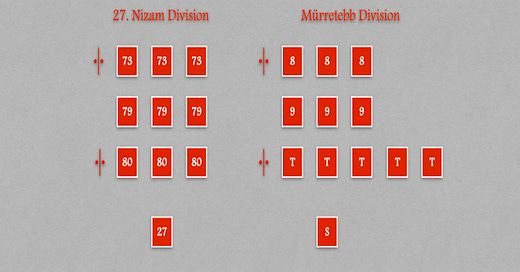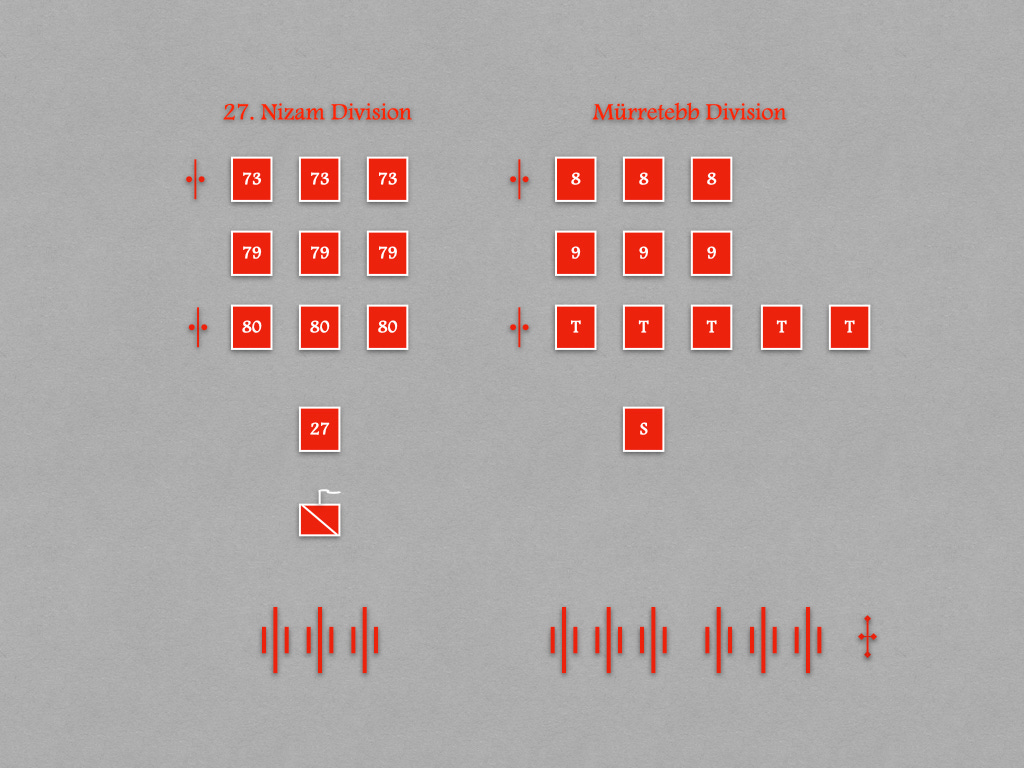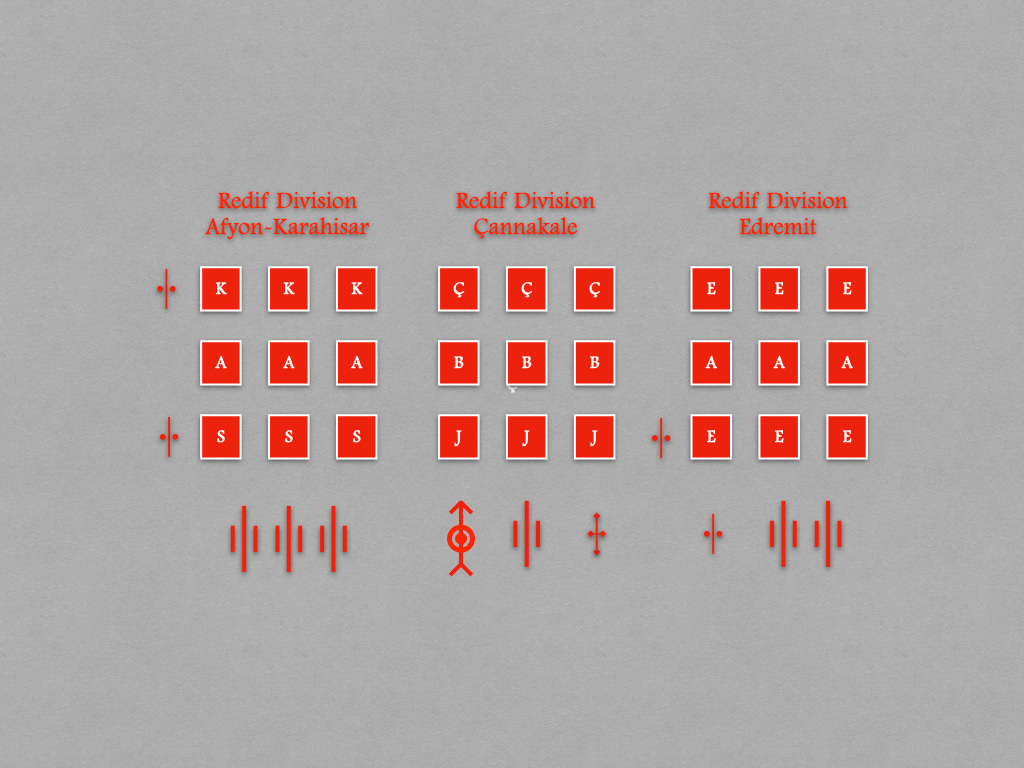On 2 February 1913, five Ottoman infantry divisions occupied positions on the Gallipoli Peninsula. One of these, the 27th Nizam Division, was an active formation with a structure that matched the ideal framework for a formation of its type. The second was the one-of-a-kind Mürreteb (“Combined”) Division which, true to its name, consisted of elements taken from other formations. The three remaining divisions were territorial (redif) formations, each of which took its name from the locality in western Asia Minor in which it had been raised: Afyon-Karahisar, Edremit, and Çannakale.
The infantry of the Mürrtebb Division consisted of two three-battalion rifle regiments (the 8th and 9th Rifle Regiments); a five-battalion territorial (redif) regiment from the distant city of Trabzon, and a single redif battalion from the (somewhat closer) town of Soma. It could thus put more rifles into a firing line than either a ten-battalion nizam division or a nine-battalion redif division.
The Mürrtebb Division was also well supplied with field artillery and automatic weapons. In addition to six four-piece field gun batteries, it possessed two companies of machine guns and one of Maxim pom-pom guns. (The latter are represented by the modified machine gun symbol to the right of the field gun glyphs.)
Each redif divisions possessed three infantry regiments, each of which was named after the town that provided the lion’s share of its men. (One regiment of the Çannakale Division, for example, took its name from the eponymous “county town” of the Çannakale region. Another bore the name of the nearby municipality of Biga.)
The allocation of heavy weapons to these divisions, however, followed no pattern at all. Thus, the Afyon-Karahisar Division got the same number of machine gun companies and field gun batteries as a nizam division, the Çannakale Division got one field gun battery, one (very rare) battery of 150mm howitzers, and one battery of Maxim pom-pom guns, but no machine gun companies at all.
Source: Hans Rohde, Die Operationen an Den Dardanellen im Balkankriege 1912/13 (Berlin: R. Eisenschmidt, 1914), pages 132-136






